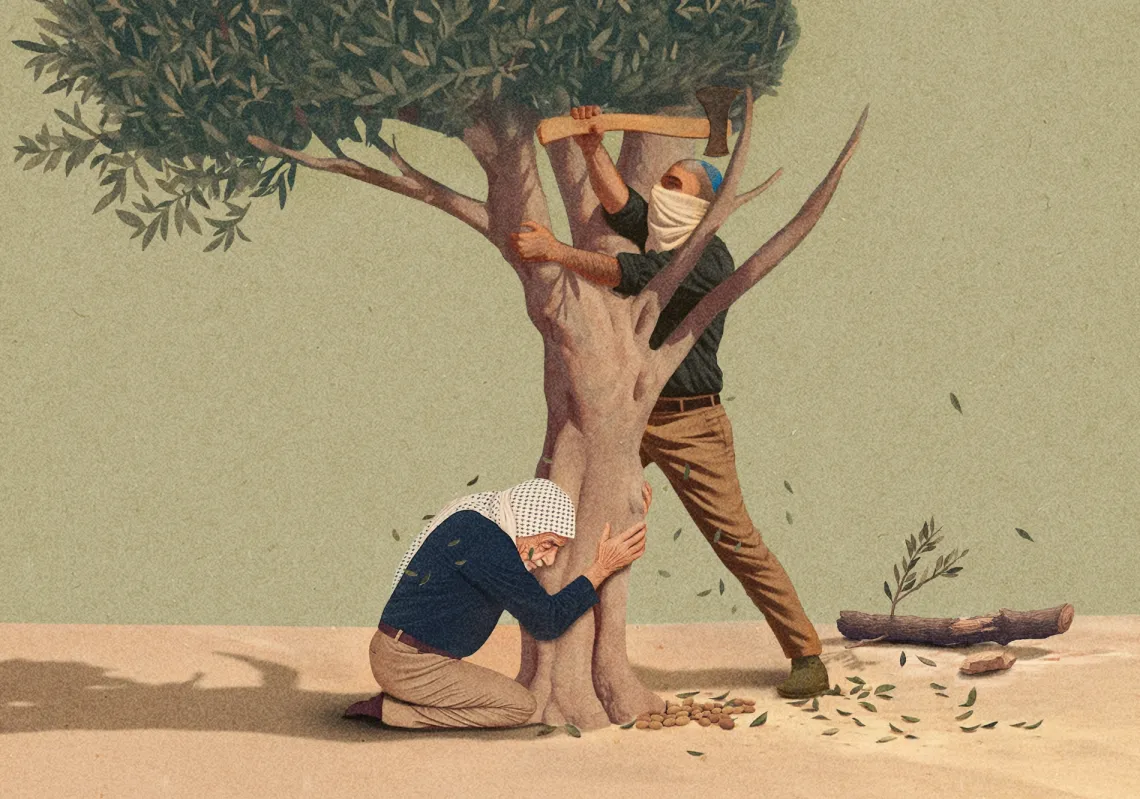 “Floos,” Mona Chalabi, 2013. [/caption]During the ten years since the US-led invasion of Iraq, we have been bombarded by statistics that purport to indicate levels of progress in the country. Statistics and numbers taken on their own do not necessarily translate into human reality, and they can be misleading. As US sports commentator Vin Scully’s ubiquitous saying goes, “Statistics are used much like a drunk uses a lamppost: for support, not illumination.”
“Floos,” Mona Chalabi, 2013. [/caption]During the ten years since the US-led invasion of Iraq, we have been bombarded by statistics that purport to indicate levels of progress in the country. Statistics and numbers taken on their own do not necessarily translate into human reality, and they can be misleading. As US sports commentator Vin Scully’s ubiquitous saying goes, “Statistics are used much like a drunk uses a lamppost: for support, not illumination.”
Mona Chalabi discovered this for herself while working as a human rights risk consultant in Iraq. Between 2012 and 2013, Chalabi interviewed and photographed Iraqis, gathering details of their aspirations for post-conflict stabilization. As she was traveling and meeting members of the community face-to-face in Baghdad, Erbil and Najaf, a more complex picture started to emerge. “I felt that data on Iraq had forgotten Iraqis,” Chalabi tells The Majalla. She had found that while development had caused progress in some areas of the country and other areas had remained stagnant, some areas were negatively impacted directly by certain successes.
Chalabi realised the limits of statistics in communicating an authentic representation of the Iraq’s current situation. What she had instead encountered was a fluctuating and inconsistent story of progress. As a way to portray this truth, she decided to convert the photographs she had taken of the community into an art form, collaging them with development statistics taken from trusted sources: “I think in the case of Iraq, neither [statistics nor photos] are really sufficient,” she tells The Majalla. “Data can pull you out of that specificity and ask how representative that image is of a nation, of a country or of an era. But data can also lose the human element,” she says.
Twelve of these photographs now form the basis of her exhibition Photographs in Numbers, which is available to view by appointment at the Arab British Centre in London until June 2013. Chalabi believes that photography and data combined can correct the individual failings of each medium. As she says, “Photography reminds the viewer about the lived experiences of humans they might not know, while at the same time admitting that it is only a snapshot of one particular place, at one particular moment in time.”
Profits from the sales of the photographs will go directly to the charity Alfanar, which provides communities in the Arab world with the technical and financial assistance. The Majalla asked Chalabi to provide a more detailed background to some of her images. Here is her commentary:
[divider]
[blockquote]
 “Abu Stitch”
“Abu Stitch”
I liked the fact that the next generation, the little girl walking beside the woman, is virtually invisible. I also wanted to explore the potential of traditional data visualization techniques like bar charts, line graphs and pie charts—methods that people are familiar with. The statistics in this image also challenge people’s assumptions about what a particular development problem is. These percentages are based on the responses of over 27,000 women aged fifteen to forty-nine. Demographic information was also provided about the women in the survey. Women living in rural areas were, on average, 10% more likely to believe that a husband has a justification for hitting his wife. Married and previously-married women were 10% more likely than unmarried women to believe this. Uneducated women were 25% more likely than those that had completed secondary education to think that a husband had a valid reason to hit his wife. In the Iraqi dialect, the title translates to “I’ll smack you” when said to a woman and, when combined with English, translates to “father of stitch.”[/blockquote]
[divider]
[blockquote]
 “Written in Cairo, Printed in Beirut, Read in Baghdad”
“Written in Cairo, Printed in Beirut, Read in Baghdad”
This is definitely one of the more subtle manipulations, and for many, it might be almost impossible to spot. This is partly because I initially struggled to spot the subject of the image—the little boy, who I did not realize is a bookseller in Mutanabbi Street in Baghdad. It was therefore important for me to frame the picture with him as the main subject and the adults cut off. This old expression, once common in the Middle East, depicts an entirely different time in Iraq’s history. Literacy during the 1970s and 1980s was at more than 90%, while the regional average struggled to get above 50%. The statistic (78% literacy rate, 2007) is displayed on a book in the image. The cover design used comes from a genuine UNESCO report on Iraqi literacy and, before being manipulated, stood out as extremely different from the other books. The tension between the design of the report and that of Iraqi literature raises the question of how connected statisticians are with the people they are writing about. [/blockquote]
[divider]

[blockquote]
“Quantitative, Qualitative”
This image is produced from a series of six photos of a woman in Najaf. The woman has been extracted from five of the photos and re-sized to be proportional to the average number of years she was expected to live in 1960, 1970, 1980, and so on. The title hints at a question: does the number of years matter if quality of life is poor? The world average [life expectancy] for 2010 is 69.6 years. The average for the Arab region is 70.4 years. Between 2003 and 2007, the life expectancy at birth of an Iraqi gradually fell from 69.5 years to 67.9 years. Since then, it has started to rise again. This is not the first time that Iraqi life expectancy has suddenly fallen. An Iraqi born in 1976 was expected to live for 60.8 years. By 1983, that figure had fallen to 56 years. Average life expectancy differs considerably for men and women. Iraqi girls born in 2010 are predicted to reach 72 years of age, while boys are expected to live to 65 years.
[/blockquote]
[divider]
[blockquote]
 “Sahatayn”
“Sahatayn”
This statistic has changed dramatically since 1990, when private expenditure on health represented 98.9% of all expenditure on health. Iraq has one of the highest tuberculosis rates in the world, at 1.17 people per 100. However, the World Health Organisation also scores countries for their data quality. Iraq, like most of the countries in the region, is classed as having low-quality information. A four-year, USD 55 million public sector modernization scheme is currently being funded in Iraq by the United Nations. The title (because two statistics are explored) literally means “your health twice,” but is more often used as an expression to wish someone good health.[/blockquote]









